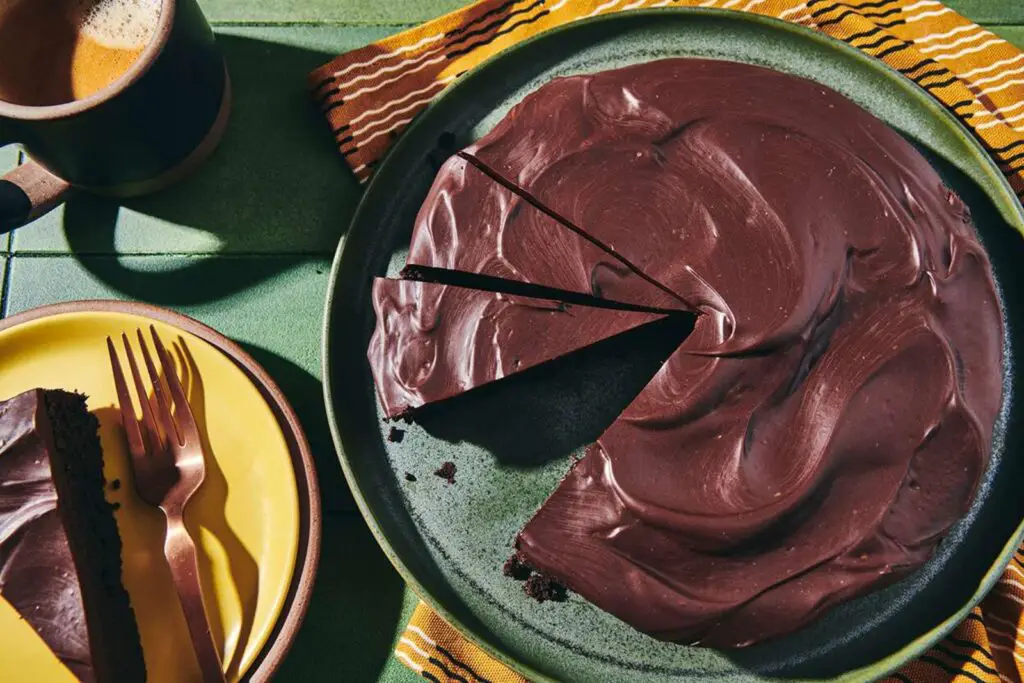
Profiteroles, those delicate and delectable pastry puffs, are a true indulgence for dessert enthusiasts. Filled with a variety of creams or even ice cream, these bite-sized treats offer a burst of flavor in every mouthful. Whether you’ve whipped up a surplus batch for a special occasion or simply want to savor these delights at a later time, freezing profiteroles is a savvy option. In this article, we’ll walk you through the precise steps to freeze profiteroles while ensuring they maintain their original taste and texture. Follow this comprehensive guide to enjoy frozen profiteroles that are just as scrumptious as when they were freshly made.
Discover the art of freezing profiteroles with the following steps:
Step 1: Prep your profiteroles
When embarking on the journey of freezing profiteroles, it’s essential to start with the right foundation – freshly made profiteroles. The quality and taste of your profiteroles after freezing greatly hinge upon the condition they’re in when you begin the process.
Profiteroles, those delightful and delicate pastry puffs, are a culinary marvel. These small, airy, and versatile treats are often enjoyed as desserts, boasting a multitude of delightful fillings, from classic whipped cream to decadent ice cream. The crisp outer shell encapsulates a world of flavors and textures that make them an irresistible treat for all occasions.
To ensure the best results when freezing profiteroles, it’s highly recommended to use profiteroles that are either homemade or sourced from a reputable bakery. The reason behind this lies in the freshness factor. When profiteroles are freshly made, they have the ideal texture – a crisp exterior that gives way to a soft, tender interior. This contrast in textures is a hallmark of well-made profiteroles.
On the other hand, if you’re considering freezing store-bought profiteroles, it’s crucial to choose a trusted bakery or supplier. This is because the quality of these delicate pastries can vary significantly. Opt for a bakery known for their attention to detail and use of high-quality ingredients. Ensuring the profiteroles are in their prime condition before freezing will ultimately contribute to a more satisfying culinary experience later.
Step 2: Allow cooling time
As you venture into the process of freezing profiteroles, a crucial step that often requires patience is allowing the profiteroles to cool down completely. The temptation to rush and freeze them immediately after baking might be strong, but taking the time to let them cool has a significant impact on their texture and overall quality post-freezing.
Profiteroles, those elegant and airy pastry creations, are a balance of contrasts – a delicate, crispy exterior and a soft, flavorful interior. This balance is achieved through precise baking, where the outer layer develops that sought-after crunch while the interior remains tender. However, right out of the oven, these pastries are still carrying residual heat and moisture.
When you hastily move to freeze profiteroles that haven’t cooled adequately, you risk trapping that excess moisture inside the packaging. This trapped moisture can lead to the formation of ice crystals on the surface of the profiteroles during freezing. As these ice crystals grow, they can disrupt the delicate structure of the pastry, resulting in a loss of texture and compromising the overall taste experience.
By allowing the profiteroles to cool down completely before freezing, you’re essentially giving them the time they need to release that excess moisture. This prevents condensation from forming inside the packaging during the freezing process. The result is frozen profiteroles that retain their intended texture – a harmonious blend of crispiness and softness that makes these pastries truly exceptional.
Step 3: Arrange on a baking sheet
When it comes to freezing profiteroles effectively, the way you arrange them on a baking sheet plays a critical role in maintaining their individuality and preventing unwanted clumping. This step, often referred to as “flash freezing,” involves creating the ideal environment for each profiterole to freeze on its own before they are stored together.
Imagine a scene where these delicate, airy pastries, each brimming with its own unique filling, are lined up on a parchment-lined baking sheet. This arrangement isn’t just about aesthetics; it’s a strategic move to preserve the integrity of each profiterole.
Profiteroles, those miniature masterpieces of pastry craftsmanship, have a tendency to stick to each other when they’re in close proximity during the freezing process. This can lead to an unfortunate situation where they fuse together into a clump, compromising their delicate textures and making it challenging to separate them when you’re ready to enjoy them.
By giving each profiterole a bit of breathing room on the baking sheet, you’re ensuring that they freeze individually before they are packed together. The slight gap between each profiterole prevents them from coming into direct contact with each other and freezing as a single mass.
This approach, known as flash freezing, has two distinct benefits. Firstly, it prevents the pastries from sticking together, preserving their intended shapes and textures. Secondly, when you package them for long-term freezing, they won’t be stuck in a solid mass, making it easier to retrieve just the number you need without the hassle of separating them.
In essence, the act of arranging profiteroles with care on a baking sheet is a preemptive measure that ensures each pastry maintains its individuality even in the freezing process. The small gaps between them, although seemingly insignificant, make a remarkable difference in the overall quality and convenience when it’s time to enjoy your frozen treats. By mastering the art of flash freezing, you’re taking a step closer to savoring profiteroles that are as delightful as the moment they were created.
Step 4: Flash-freeze the profiteroles
With your profiteroles meticulously arranged on the baking sheet, ready to take their plunge into the world of freezing, it’s time to understand why this step is more than just a mere moment in the process. This is where the concept of flash freezing comes into play, a technique that has a significant impact on maintaining the quality and integrity of your delicate pastries.
As you place the baking sheet laden with profiteroles into the freezer, you’re setting in motion a controlled process that freezes the pastries swiftly and efficiently. Unlike traditional freezing methods, where items are allowed to freeze gradually, flash freezing involves rapidly reducing the temperature of the profiteroles in a relatively short period.
But why the rush? Why is flash freezing such a crucial step in the preservation of these delectable treats? The answer lies in the relationship between freezing rate and texture preservation. When substances freeze slowly, ice crystals have ample time to form and grow, potentially causing damage to the cell structure of the food. This is particularly true for items with delicate textures, like profiteroles.
By subjecting the profiteroles to flash freezing – a process where they’re exposed to very low temperatures quickly – you’re essentially minimizing the formation of large ice crystals. Instead, the ice crystals that do form are smaller and more uniform. This is a game-changer when it comes to preserving the delicate balance of textures in profiteroles. The rapid freezing prevents the formation of large ice crystals that could damage the tender interior while maintaining the crisp exterior.
The roughly hour-long freeze time suggested in this step is a general guideline. Depending on factors like the size of your profiteroles and the efficiency of your freezer, the actual time might vary slightly. The key is to monitor the profiteroles until they’ve solidified. When you retrieve them, you’re greeted with pastries that are essentially locked in their prime state, ready to be stored for a future moment of indulgence.
Step 5: Package your profiteroles
Now that your profiteroles have undergone the crucial flash freezing process on the baking sheet, it’s time to shift our focus to the art of packaging – a step that plays a pivotal role in preserving the exquisite taste and texture of these delicate pastries throughout their time in the freezer.
Once you remove the baking sheet adorned with solidified profiteroles from the freezer, you’re greeted with perfectly frozen treats that have maintained their distinct shapes and structural integrity. However, it’s imperative to remember that while they might be frozen, they’re still susceptible to the effects of freezer air and moisture. This is where the right packaging comes into play.
Imagine your profiteroles as little treasures that need protection against the elements of the freezer environment. The purpose of packaging them is twofold: to prevent freezer burn and to maintain the incredible flavors and textures that make these pastries so delightful.
When it comes to packaging options, you have two primary choices: an airtight container designed for freezer use or resealable freezer bags. Both options serve the same purpose of sealing the profiteroles away from the freezer’s harsh environment, but they differ in their approach.
Using an airtight container provides a sturdy shield against temperature fluctuations and moisture infiltration. These containers are designed to keep your profiteroles secure, maintaining their quality by creating a barrier against potential freezer odors and preventing ice crystals from forming on the surface of the pastries.
On the other hand, resealable freezer bags are a convenient choice that allows you to customize portion sizes and save space in your freezer. However, when opting for bags, it’s essential to squeeze out as much excess air as possible before sealing. Excess air inside the bag can lead to freezer burn – a phenomenon where moisture is drawn out of the food, causing it to become dehydrated and lose its quality.
Step 6: Label with care
As your profiteroles find their snug spot in their chosen storage container or freezer bag, it’s time to give a nod to the future – a future where you’ll be reaching into the freezer for a delightful treat. The seemingly simple act of labeling might appear trivial, but it’s a key step that ensures you’re fully in control of your frozen profiterole adventure.
Imagine the scenario: your freezer is a treasure trove of frozen delights, each package holding a promise of deliciousness. In the midst of this frozen wonderland, your labeled containers and bags are your guiding stars, allowing you to navigate the world of frozen treats with precision.
The importance of labeling lies in the details – particularly, noting down the date of freezing. This might seem like an inconsequential detail, but it carries substantial significance. Profiteroles, like all frozen foods, have a limited peak quality window. Over time, frozen foods can experience changes in texture, flavor, and overall quality due to factors like freezer burn and moisture loss.
By carefully marking the date of freezing on your chosen container or bag, you’re essentially providing yourself with a tool to prioritize consumption. The freshness of your profiteroles is directly linked to their enjoyment, and knowing when they were frozen allows you to plan your indulgence strategically. This ensures that you reach for the oldest frozen treats first, savoring them at their peak quality.
Picture this: you open your freezer, scan the labels, and effortlessly decide which package to defrost based on the date information. This simple act ensures that you’re savoring profiteroles that are as close to their freshly made state as possible. It’s a small but significant way to enhance your culinary experience and make the most of your frozen treasures.
Step 7: Welcome to the freezer
As you bid farewell to your profiteroles, now safely nestled in their labeled containers or snug freezer bags, it’s time to usher them back into the cool embrace of the freezer. However, this step isn’t just about storing your frozen treasures; it’s about ensuring their protection and maintaining their pristine state until you’re ready to relish them.
Imagine your freezer as a carefully curated gallery of flavors, a place where every package holds a story of culinary delight waiting to be unwrapped. Your labeled containers and bags are the precious exhibits in this gallery, each telling a tale of care and foresight.
The placement of these frozen gems within your freezer is more than just an organizational choice; it’s a strategic move to preserve their shapes and textures. Profiteroles, delicate and airy as they are, can be vulnerable to external pressure. When surrounded by heavier items or placed in precarious spots, they risk getting squashed or deformed, resulting in a less-than-perfect presentation upon thawing.
By thoughtfully positioning your labeled containers or bags away from heavier items and ensuring they’re in a stable, secure spot, you’re safeguarding the integrity of your profiteroles. This means that when the time comes to retrieve them, you’ll find each profiterole still in its distinct shape, ready to be thawed and savored with the same delight as when they were freshly made.
Moreover, the deliberate placement of your profiteroles within the freezer plays a role in efficient space utilization. When arranged in a way that maximizes space and minimizes chances of being jostled, your profiteroles not only remain visually appealing but also stay safe from potential damage.
What’s the maximum recommended freezer storage time?
Profiteroles are best consumed within 1 to 2 months of freezing. Prolonged storage may lead to texture and taste deterioration. Adhering to this time frame ensures the highest quality upon thawing and consumption.
Step 8: Thaw and savor
The moment you’ve been waiting for has finally arrived – the time to reunite with your frozen profiteroles and indulge in their exquisite flavors. However, this step is more than just a simple act of retrieval; it’s about ensuring that the flavors and textures you’ve preserved remain intact, resulting in a culinary experience that’s as delightful as the day they were created.
Imagine a scenario where anticipation meets preparation as you stand before your freezer, ready to extract the labeled containers or bags that hold your frozen treasures. The process of thawing and savoring is a dance between patience and reward, and understanding its nuances ensures a satisfying outcome.
When you remove your profiteroles from the freezer, resist the urge to rush the process. Gradual thawing is the key to maintaining the delicate balance of textures within each pastry. Placing them at room temperature for about 15 to 20 minutes allows the profiteroles to gently come to their natural state. This gradual thawing prevents any sudden shifts in texture, ensuring that the outer shell retains its crispness while the interior remains tender.
Alternatively, if you’re yearning for that satisfying crunch, a brief rendezvous with the oven can work wonders. Preheat the oven to a moderate temperature, and then place your frozen profiteroles inside for just a few minutes. This step rejuvenates the crispness of the outer shell, creating a harmonious contrast with the soft interior that’s been preserved through your careful freezing process.
The art of thawing and savoring isn’t just about restoring the profiteroles to their original state; it’s about creating a moment of culinary delight. As you watch the profiteroles thaw or briefly warm in the oven, take a moment to appreciate the journey they’ve been on – from being freshly made to being carefully frozen and now being brought back to life.
Other related questions
Can I refreeze profiteroles?
Refreezing profiteroles is generally not recommended. Thawed pastries can suffer texture and flavor changes due to moisture loss and ice crystal formation. For optimal quality, consume profiteroles after their initial freeze.
How do I know if the profiteroles have gone bad after being frozen?
Inspect for signs of freezer burn:
- Visual Check: Look for freezer burn signs like dryness, discoloration, or frost. If profiteroles appear discolored or have an unusual texture, it could indicate spoilage.
- Odor Test: A sour, off-putting smell suggests spoilage. Trust your sense of smell; if it’s unpleasant, discard them.
- Texture and Taste: If profiteroles feel unusually soggy or have an altered taste, they may have deteriorated during freezing. Quality changes may affect their overall enjoyment.
Can I freeze profiteroles filled with cream or custard?
Yes, it’s possible to freeze profiteroles with cream or custard filling. However, to maintain texture and avoid sogginess, it’s recommended to freeze the unfilled pastries and add the filling after thawing. This ensures a delightful taste and preserves the integrity of the cream or custard.
Can I freeze chocolate-covered profiteroles?
While freezing chocolate-covered profiteroles is possible, the chocolate coating might develop a slightly different texture upon thawing. Consider freezing them without the chocolate and adding it after thawing.
Can I freeze profiteroles with various fillings together?
Freezing profiteroles with different fillings in the same container might lead to flavor mingling. It’s best to freeze similar flavors together or in separate containers to maintain their distinct tastes.
Can I freeze profiteroles made with alternative ingredients (gluten-free, vegan, etc.)?
Yes, you can freeze profiteroles made with alternative ingredients. However, be aware that certain substitutes might behave differently during freezing. Experimentation may be necessary to achieve the desired results.
Can I freeze profiteroles with different sizes?
Yes, you can freeze profiteroles of various sizes. Keep in mind that smaller profiteroles might freeze and thaw slightly faster than larger ones. Adapt thawing times accordingly to achieve consistent results.
Are there specific techniques for freezing mini profiteroles or éclairs?
The process is similar for mini profiteroles or éclairs. Follow the same steps, but adjust freezing and thawing times to account for their smaller size. This ensures they maintain their quality and delightful flavors.
Can I freeze profiteroles that have been filled with fruit or berry compote?
It’s recommended to freeze profiteroles without fruit or berry compote filling. Freeze the unfilled pastries and add the compote after thawing to maintain their texture and prevent sogginess. This ensures optimal taste and quality when enjoying them later.








